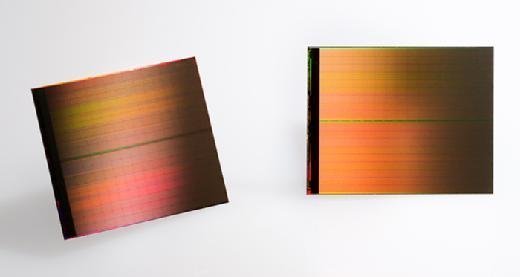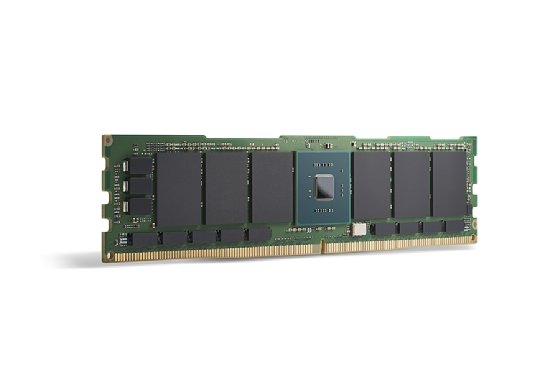3D XPoint
What is 3D XPoint?
3D XPoint is memory storage technology that was jointly developed by Intel and Micron Technology. The two vendors intended for the technology to fill a gap in the storage market between dynamic RAM (DRAM) and NAND flash. Products in this niche are often referred to as storage-class memory.
The two vendors developed a product called Optane as the brand using 3D XPoint technology. However, due to concerns that Optane components couldn't meet cost and profitability expectations, Micron left the partnership with Intel in 2021 and sold its fabrication plant to Texas Instruments. In 2022, Intel announced it would no longer manufacture Optane memory components or support Optane on its newer generation central processing units (CPUs).
How 3D XPoint memory works
In their 2015 announcement of the technology, Intel and Micron claimed 3D XPoint would be up to 1,000 times faster and have up to 1,000 times greater endurance than NAND flash. They also said it would have 10 times the storage density of conventional memory. Early products were faster and more durable than NAND and denser than conventional memory, but they didn't ultimately live up to the full extent of the providers' claims and financial expectations.
3D XPoint's architecture differed from other flash products because it's based on phase-change memory technology, a form of non-volatile storage originally proposed in 1970.
3D XPoint uses a transistorless, cross-point architecture that positions selectors and memory cells at the intersection of perpendicular wires. A current sent through the top and bottom wires touching each cell accesses the cells individually. To improve storage density, 3D XPoint cells are stacked to create a three-dimensional architecture.
In 3D XPoint, each cell stores a single piece of data, making a cell represent either a 1 or a 0 through a bulk property change in the cell material. This approach modifies the cell's resistance level. The cell can occupy either a high- or low-resistance state, and changing the resistance level of the cell changes whether the cell is read as a 1 or a 0. Because the cells are persistent, they hold their values indefinitely, even when there is a loss of power.
Read and write operations occur by varying the amount of voltage sent to each selector. For write operations, a specific voltage is sent through the wires around a cell and selector. This activates the selector and enables voltage through to the cell to initiate the bulk property change. For read operations, a different voltage is sent through to determine whether the cell is in a high- or low-resistance state.
3D XPoint has the ability to write data at a bit level, an advantage over NAND. All the bits in a NAND flash block must be erased before data can be written. In theory, this capability enables 3D XPoint to have higher performance and lower power consumption than NAND flash.

Major 3D XPoint products
Intel began shipping its first 3D XPoint products in the spring of 2017. Optane memory for consumer PCs shipped soon after. Designed as a cache drive that came in 16 GB and 32 GB capacities, Optane memory initially worked on PCs with Intel's seventh-generation Intel Core processors, plugging into an M.2 slot on Intel 200 series chipset motherboards. Subsequent Intel processor generations continued to use Optane until Intel ended support for Optane with its 12th- and 13th-generation CPUs.
The Intel Optane Memory line includes these products:
- Intel Optane Memory Series.
- Intel Optane Memory M10 Series.
- Intel Optane Memory H10 with Solid State Storage.
- Intel Optane Memory H20 with Solid State Storage.
3D XPoint speed and performance
With the advent of 3D XPoint architecture, data was no longer stored in 4 KB blocks using a slow, file input/output (I/O) stack. The technology enabled small amounts of data to be written and read, making the read/write process faster and more efficient than NAND. Initial products using the 3D XPoint technology performed accordingly but not at the speed and performance levels Intel and Micron promised when they rolled out the technology.
While not as fast as DRAM, 3D XPoint had the advantage of being non-volatile memory. From a performance and price standpoint, 3D XPoint technology falls between fast but costly DRAM and slower, cheaper NAND flash memory.

According to Intel, the 375 GB P4800X drive performed five to eight times faster than the company's NAND flash-based DC P3700 in internal tests at low queue depths using a mixed workload. The company further claimed the P4800X could achieve up to 500,000 I/O operations per second (IOPS) -- or approximately 2 GBps -- at a queue depth of 11.
At that time, industry observers speculated that the PCI Express (PCIe) bus used in the P4800X was restricting it from the promised speed of 1,000 times faster than NAND. Other system changes thought to be needed for the technology to meet higher performance goals included segregating persistent from nonpersistent memory when handling machine check errors.
It was also thought that using a compiler that would enable persistent memory to be declared, along with link editors that could build that memory into an application, would improve performance. The applications themselves had to be rewritten to eliminate file I/O and to use single instruction and vector operations.
3D XPoint product costs
Intel Optane memory cards continue to be available. The following are examples of products and current pricing:
- Optane solid-state drive (SSD) P1600X Series 118 GB, using M.2 and PCIe --$71.
- Optane Memory M10 16 GB using M.2 and PCIe -- $15.
- Optane Memory H20 32 GB plus SSD storage 512 GB using M.2 and PCIe -- $80.
- Optane Memory H10 32 GB plus SSD storage 512 GB using M.2 and non-volatile memory express plus PCIe -- $116.
3D XPoint use cases
3D XPoint was designed to serve as an additional layer of storage between flash and DRAM. Tiering storage between flash drives and hard drives is a common practice. High-intensity data and applications that benefit from high speeds are stored on the flash layer, while data and applications that are accessed less frequently are put on disk. 3D XPoint delivers another layer of storage above flash for data and applications that need even greater performance.
In addition to high-performance storage and caching, 3D XPoint technology is used to extend and replace memory. The goal is to increase server memory by as much as eight times and displace DRAM by as much as a 10-1 ratio for select workloads.
Intel provided three ways to extend memory with 3D XPoint Optane SSDs:
- Using an operating system paging mechanism that moves data out to the PCIe-attached SSD when DRAM fills for a workload.
- Using optimized applications.
- Using Intel's Memory Drive Technology supported on its Xeon processors.
Intel planned to release 3D XPoint dual in-line memory modules (DIMMs) for use cases that needed additional memory. Suggested applications for 3D XPoint Optane, and particularly Optane non-volatile DIMMs, include the following:
- Expanding the apparent size of DRAM.
- Enabling bigger, more-effective databases.
- Helping to overcome big data network bottlenecks.
- Facilitating high-performance computing applications.
- Extending memory and boosting instance storage performance in the cloud.
- Providing the storage capacity and speed that hybrid clouds need.
- Serving as primary memory tiers in hyperconverged systems.
3D XPoint vs. Compute Express Link
Compute Express Link (CXL) technology, developed by the CXL Consortium, is an open industry standard interface for high-speed communications between CPUs and memory elements. The technology manages memory coherency and supports resource sharing among CPU memory and memory in attached devices. It's an important resource for applications involving artificial intelligence and machine learning.
CXL operates on top of the PCIe bus architecture for adding memory, such as DRAM blocks, onto a PCIe bus. Optane, on the other hand, is persistent memory that delivers low latency unlike NAND Flash storage.
The latest version of the CXL specification is 3.1, unveiled in November 2023. It builds on prior versions and is backward-compatible with older versions.
The future of 3D XPoint
Both Intel and Micron have shifted their focus to the CXL standard and memory devices using the standard. Optane-based memory components are available, but they're no longer being manufactured and aren't supported on Intel's 12th- and 13th-generation CPUs.
Learn more about the future of CXL technology in the data center and its potential to work with AI applications.






